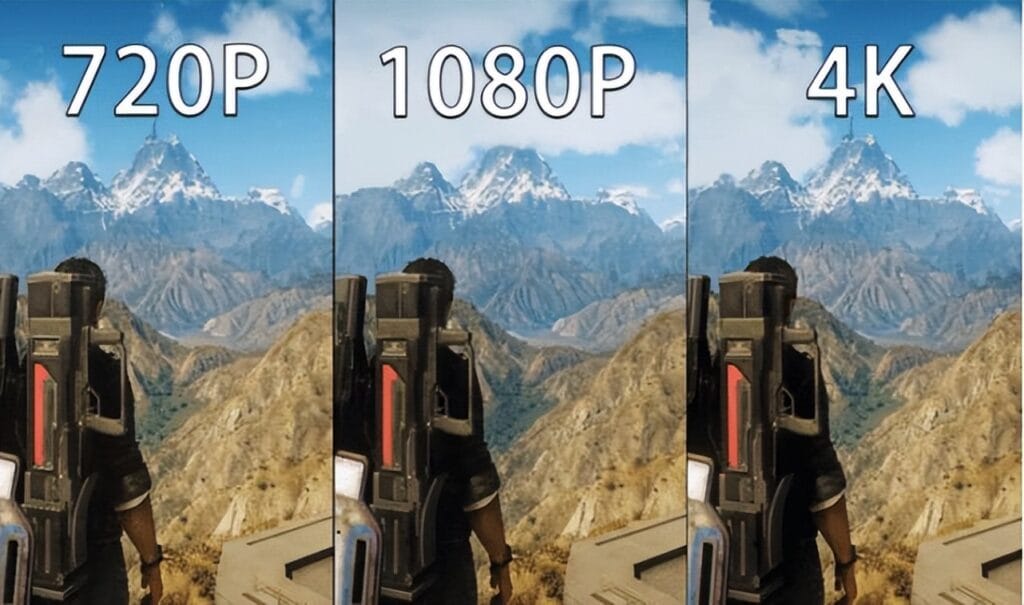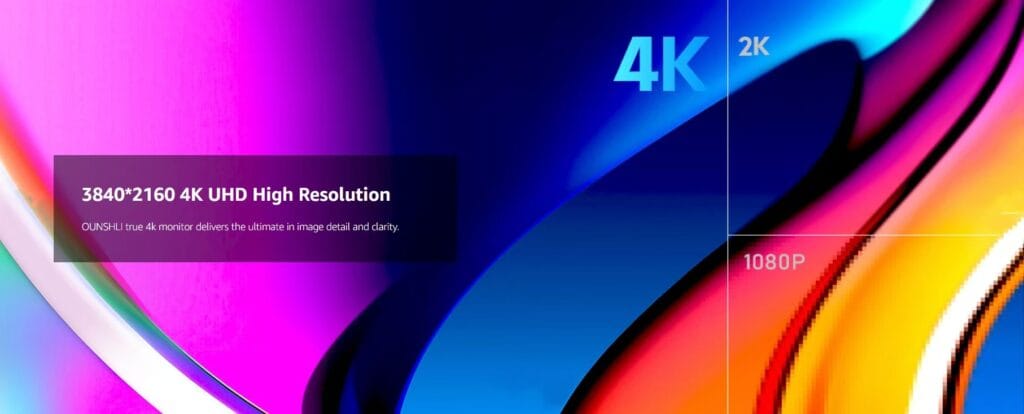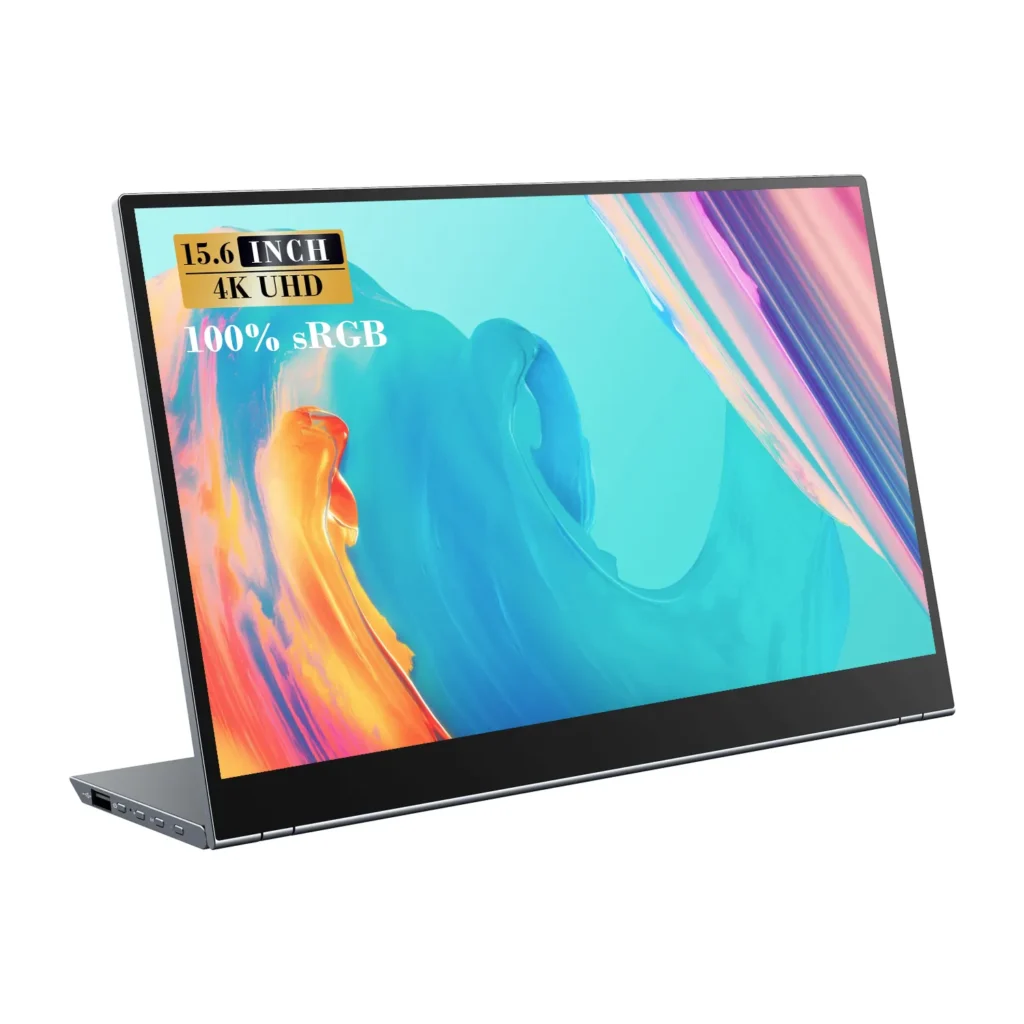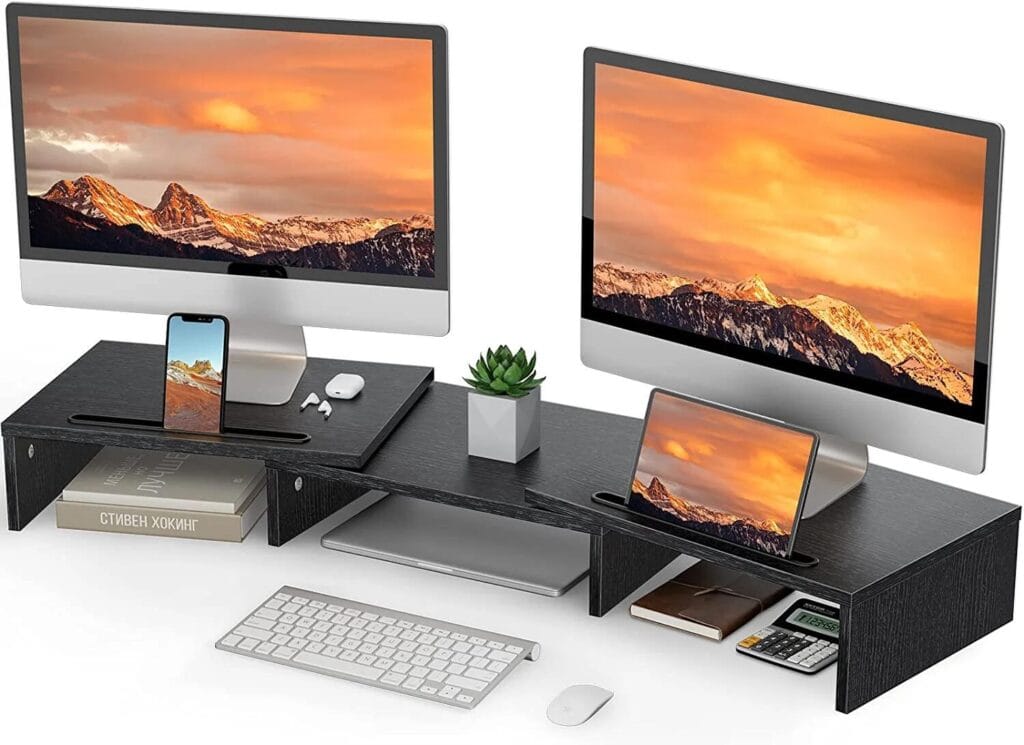Table of contents
In recent years, the rise of portable screens has revolutionized how we work, play, and consume media on the go. As more users seek out portable displays to boost their productivity, the debate between 4K and Full HD (1080p) screens has intensified. While both options offer distinct advantages, the choice between a portable 4K screen and a Full HD screen ultimately depends on your needs, preferences, and budget.
This blog will explore the key differences between portable 4K screens and Full HD displays, diving into the benefits, drawbacks, and ideal use cases for each. If you’re considering upgrading your current portable screen, keep reading to determine if the move to 4K is truly worth it.

Understanding Resolution: 4K vs. Full HD
Before we delve into the differences, let’s break down what 4K and Full HD resolutions mean.
- Full HD (1080p): Refers to a screen resolution of 1920 x 1080 pixels, which has been the standard for many years. It offers good image clarity and is suitable for most common uses, including office work, web browsing, and streaming content.
- 4K (Ultra HD): A 4K screen has a resolution of 3840 x 2160 pixels—four times the number of pixels as Full HD. This increased pixel density offers sharper, more detailed visuals, particularly noticeable on larger screens or when working with high-resolution content.
Benefits of Portable 4K Screens
1. Superior Image Quality
The most obvious advantage of a 4K portable screen is its crystal-clear image quality. With four times the pixel count of Full HD, 4K screens offer sharpness and detail that make images, videos, and even text appear much clearer. Whether you’re working on video editing, graphic design, or simply watching movies, a 4K screen provides a far more immersive visual experience.
2. Future-Proofing
As 4K content becomes more widespread, investing in a portable 4K screen ensures you’re ready for the future. Many streaming services, video games, and online content are now available in 4K, and more devices are supporting higher resolutions. A 4K screen guarantees compatibility with future technologies, making it a worthwhile long-term investment.
3. Ideal for Creative Professionals
For creatives like photographers, videographers, and graphic designers, a 4K display is essential for precise editing and color accuracy. The increased resolution allows professionals to see intricate details that would be lost on a Full HD screen, ensuring the highest quality in their work.
4. Larger Screen Sizes Are More Effective
If you’re considering a larger portable screen—for example, 15 inches or more—4K resolution truly shines. On larger screens, Full HD can sometimes result in pixelation, but a 4K display maintains sharpness and clarity even as the screen size increases.
Drawbacks of Portable 4K Screens
1. Higher Price
One of the main drawbacks of 4K portable screens is their cost. Due to their advanced technology, 4K screens are generally more expensive than their Full HD counterparts. If you’re on a tight budget, the price difference might make Full HD a more appealing option.
2. Increased Power Consumption
Portable 4K screens require more power than Full HD displays due to their higher pixel count. This increased power consumption can drain your laptop’s battery faster, especially if the screen is used intensively for video editing or gaming. You may need to keep your laptop plugged in more often when using a 4K screen.
3. Limited Content Availability
While 4K content is becoming more common, it’s not yet the standard across all platforms. If you mostly use your portable screen for tasks like web browsing, email, and light office work, you won’t see much benefit from a 4K screen, as most of this content is optimized for 1080p.
Benefits of Full HD Portable Screens
1. Affordability
A major advantage of Full HD portable screens is their cost-effectiveness. They are widely available and far more affordable than 4K screens, making them an excellent option for users who need a portable display without breaking the bank. If you’re a student or professional who needs an extra screen for productivity without the need for ultra-high resolution, Full HD is often the better choice.
2. Energy Efficiency
Since Full HD screens consume less power than 4K models, they are more energy-efficient, which translates to longer battery life for your laptop or portable device. This is particularly important for users who work remotely or travel frequently and may not always have easy access to a power source.
3. Adequate for General Use
For tasks like word processing, email, web browsing, and casual media consumption, a Full HD display provides more than enough clarity. If your primary use case doesn’t require high-resolution images or detailed video editing, a 1080p screen will be perfectly adequate.
Drawbacks of Full HD Portable Screens
1. Lower Visual Quality
While Full HD screens provide decent image quality, they can’t match the sharpness and detail of a 4K display. For users working with high-resolution content or those who demand the best possible visuals for tasks like video editing or gaming, a Full HD screen may feel limiting.
2. Less Future-Proof
As more content transitions to 4K, Full HD may feel outdated in the near future. Investing in a Full HD screen now means you might need to upgrade sooner than if you were to choose a 4K model, especially as more platforms and devices adopt 4K as the standard.
Is the Upgrade to a Portable 4K Screen Worth It?
The answer to this question largely depends on your specific needs and budget. If you’re a creative professional, avid gamer, or someone who requires high-resolution visuals for detailed tasks, the upgrade to a portable 4K screen is certainly worth the investment. The sharper visuals, greater detail, and future-proofing make 4K an excellent choice for those who prioritize image quality and performance.
On the other hand, if your needs are more general—such as working on office tasks, browsing the web, or watching standard content—a Full HD portable screen will serve you well without the extra cost. It’s also a more battery-friendly option, making it ideal for users who need portability and long battery life.

At last
Both portable 4K screens and Full HD displays offer distinct advantages, and the right choice ultimately depends on your use case and budget. If you require stunning image quality, work with high-resolution content, or want a future-proof device, 4K is the way to go. However, if affordability and energy efficiency are more important, a Full HD screen will meet your needs perfectly.

15.6 Inch FHD 4K Portable Displays Screen Ultra-Slim IPS Display Use For Multiple Screen Laptop
3 screens for laptop 4K resolution 1080p portable touch screen monitor additional screen for laptop best laptop monitor charging pad Digital Picture Frame external display for phone games portable screen Hotel And Tourism Laptop Screen Extender monitor extender monitors for laptops Multiple Screens ONEXT Monitor PC monitor portable computer screen Portable displays portable gaming monitor portable monitor portable monitors Portable screen portable screens Portable Smart TVs portable TV portable tvs Port USB Hub Qi standard Qi wireless charging rolling TV second monitor StanbyME TV Stand By Me TV StandbyMe TV three screen laptop tri screen laptop two monitors USB Computer Monitor USB hub USB hubs USB port USB Port Hub Wireless Chargers wireless charging Wireless Portable Monitor


